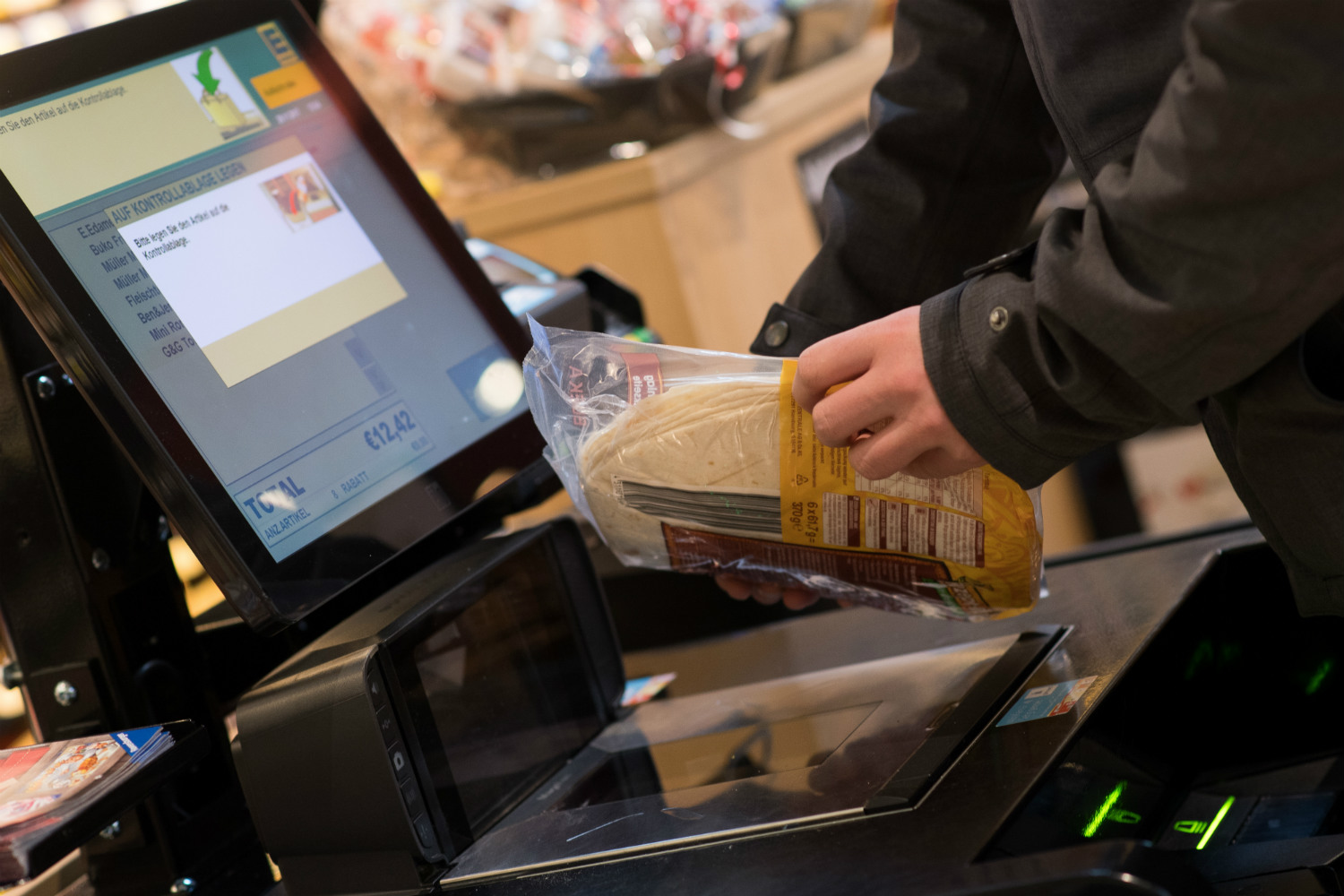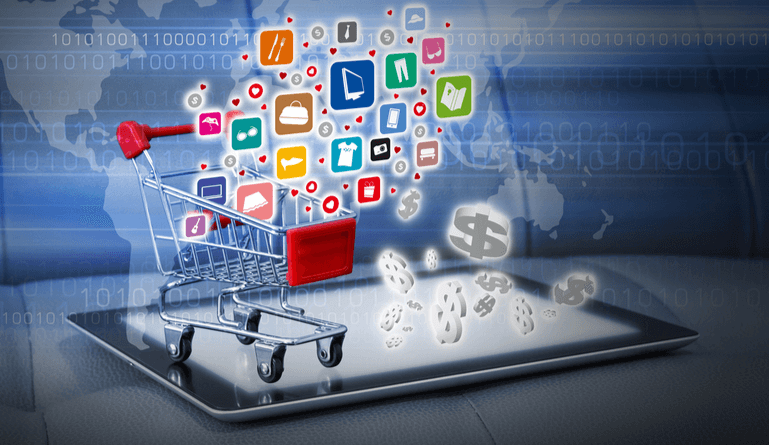Big Data Analytics are playing a huge role in transforming the retail industry & unlocking business potential. In this article, explore the power of Big Data in Retail Industry

Big Data Analytics are playing a huge role in transforming the retail industry & unlocking business potential. In this article, explore the power of Big Data in Retail Industry
Global Retail Self-Checkout Terminals Markets is expected to grow at a significant CAGR of 18.63% in the upcoming period as the scope and its applications are rising enormously across the globe. Retail Self-Checkout Terminals allow the customer to process their own purchases from a retailer by scanning and applying payment for the items without staff assistance. The fixing of multiple self-checkout terminals can progress service and reduce crowding to confirm a happy shopping atmosphere.
The factors that are playing a major role in the growth of market are rising preference for self-checkout terminals across the globe, reduction in manual labor cost, and rising demand from the populace, as they do not prefer waiting in long queues. However, technological problems and design flaws may restrain overall market growth in the years to come.
In the upcoming period, the new trend will come into being; which would include development of NFC technology. Communication technology allows consumers to exchange data between two devices. In addition, an innovative system like scan-and-go pay will come into the existence. Retail self-checkout terminals market is segmented based on product type, end-user, and region.

Get Sample Copy of this Report @
Cash and cashless, hybrid, and other product types could be explored in Retail Self-Checkout Terminals in the forecast period. Hybrid self-checkout terminals sector accounted for the substantial market share of Retail Self-Checkout Terminals and is estimated to lead the overall market in the years to come. The reason behind the overall market growth could be expedited dual mode system in one unit, availability of labors at low cost, and allow multiple operations in a single unit.
The market may be categorized based on end-users like specialty stores, convenience stores, hypermarkets & supermarkets, and others. Hypermarket, supermarket, and convenience stores accounted for the majority market share of retail self-checkout terminals and are estimated to continue with its dominance in the years to come.
Globally, North America accounted for the significant market share of Retail self-checkout terminals and is estimated to lead the overall market in the years to come. The reason behind the overall market growth could be developing modern grocery retail stores, rising financial, hospitality, and retail stores, and growing investment by large retailers to advance customer satisfaction. The United States and Canada are the major consumers of Retail Self-Checkout Terminals in this region.
Europe and the Asia Pacific are also estimated to have a positive influence on the future growth. Europe is the second largest region with significant market share. However, Asia Pacific is estimated to grow at the highest CAGR in the forecast period. The key players in the retail self-checkout terminals market are TOSHIBA TEC, Diebold Nixdorf, Pan-Oston, FUJITSU, NCR, ITAB Shop Concept, Slabb, ECR Software, PCMS Group, and IER. These players are concentrating on inorganic growth to sustain themselves amidst fierce competition.
Browse Related Category Market Reports @
https://www.millioninsights.com/industry/computing-and-technology
The growth of Big Data in Retail Industry is accelerating rapidly. Explore real world use cases of Big Data and amazing case studies in retail sector

Retail businesses are one of the most prominent business models, but many retail businesses, particularly small businesses, can struggle to succeed. One of the ways that retail businesses have seen increased market share and greater business success is through the rise of eCommerce and internet sales. Ecommerce has huge benefits for retailers and customers alike.
Since the late 1990s, internet shopping has changed the landscape of consumer experiences and more and more businesses are creating advanced eCommerce experiences to earn and keep more customers business.
According to Ecommerce-Land, “ Ecommerce became possible in 1991 when the Internet was opened to commercial use. Since that date, thousands of businesses have taken up residence at web sites…Although the Internet began to advance in popularity among the general public in 1994, it took approximately four years to develop the security protocols (for example, HTTP) and DSL which allowed rapid access and a persistent connection to the Internet. In 2000 a great number of business companies in the United States and Western Europe represented their services in the World Wide Web. At this time the meaning of the word eCommerce was changed. People began to define the term eCommerce as the process of purchasing of available goods and services over the Internet using secure connections and electronic payment services. Although the dot-com collapse in 2000 led to unfortunate results and many of eCommerce companies disappeared, the “brick and mortar” retailers recognized the advantages of electronic commerce and began to add such capabilities to their web sites.”
Many businesses owners owe their success to the rise of eCommerce and internet technology.
The internet never closes. Your customers don’t have to be limited by the hours that your retail location is open. Ecommerce in retail allows businesses better flexibility of being able to offer products and services to their customers on the schedule that works best for them.
Your e-commerce presence serves as an additional storefront, giving you increased opportunity for revenue and sales. Online stores also offer your organization the chance to offer web-only products and exclusive deals that customers can’t get in stores. That means that even customers who do visit your physical location will be incentivized to shop online as well, giving you a greater opportunity for sales and revenue growth.
The internet landscape can give your brand greater visibility. In some cases, e-commerce only businesses, including Amazon, have grown so substantially that they found it brand-smart to create physical locations to highlight the best of their products and features. The eCommerce experience gives your brand a ton of potential real estate – people are much more likely to find you on an online search or through another eCommerce vendor than randomly driving by your space.
Subscribe free now to get more technological updates! https://is.gd/NBPmt3
ECommerce in retail gives businesses access to just about the whole global market – even small businesses, like Etsy shops, have the ability to send their products worldwide. Location doesn’t have to limit your business with eCommerce in retail.
ECommerce sites like Amazon give recommendations to customers based on their previous purchases and search history. This creates a customer experience that’s more personalized to their likes, dislikes, and other habits, making it less generic experience than many people have in stores.
One of the biggest benefits of e-commerce in retail is an experience that centers around the customer. Maybe times, retail locations are limited by their space for fixtures or inventory. An eCommerce experience allows for brands to offer their customers the ability to shop at their leisure, in the comfort of their own home or office. This means that people who are unable to travel, who have varying schedules, or who simply want to more time to peruse their options can take their time and enjoy the convenience of a digital experience. It also offers better flexibility in terms of payment – online retailers, for instance, have the ability to offer payment through PayPal and other finance options.
If you have a physical retail location, you are limited to the confines of that space for as long as your lease term. If you experience a lot of growth, parts of your business may suffer because of these limitations. ECommerce in retail allows businesses to grow without fear of outgrowing a space and it allows businesses to scale as needed.
If you’re online-only retailer, you don’t have to contend with the costs of physical space, staff, and more. While there is still the likely cost of warehousing and shipping product, most businesses find that they save significantly when they use the mode of eCommerce in retail. Brands also find that advertising for their online presence is cheaper than traditional methods that physical retail has used, such as direct mail, billboards, magazine ads, and more.
Ecommerce has long been a driver of business, sales, and revenue. It’s become such a central part to the customer experience that retail businesses that might not otherwise exist, such as niche organizations, can thrive. Start-ups, creators, and other entrepreneurs can more easily start and run a business successfully due to eCommerce.
About Us
TechFunnel.com is an ambitious technology media web property dedicated to technology news, product reviews, and analyzing how technology affects business, finance, human resources, marketing, government, and everyday life. At TechFunnel.com, you will read the latest news and learn our opinion about product releases that are right for you. Watch videos about the latest trends in software, apps, games, AI, and virtual reality. Connect with a growing community of writers and editors who ask questions, seek answers, and innovate along the way in the realm of technology. In a medium that is meant to be effective and efficient, we strive to be both.
Bython Media Inc.
D.B.A. TechFunnel.com
8668 John Hickman Parkway
Suite 1004
Frisco, TX 75034
Phone: +1 (214) 295-7705
 With the Miscellaneous Retail Executives List, we offer a highly comprehensive contact database of the professionals or businesses related to the miscellaneous retail industry.
With the Miscellaneous Retail Executives List, we offer a highly comprehensive contact database of the professionals or businesses related to the miscellaneous retail industry.
You can send an enquiry at sales@bluemailmedia.com and Contact us now at 1-888-494-0588 to know more about mailing list.